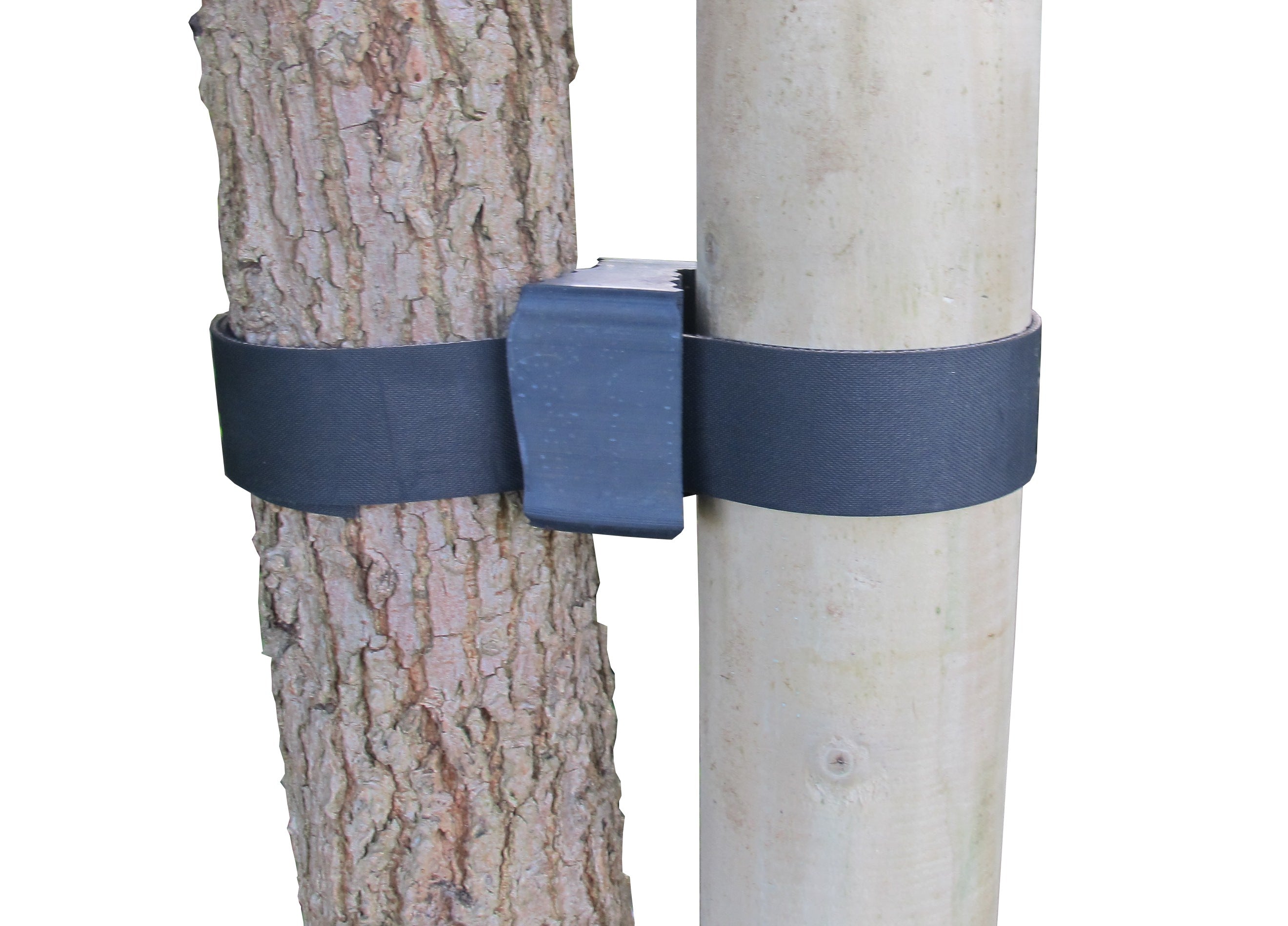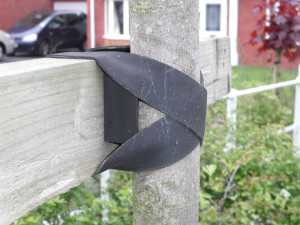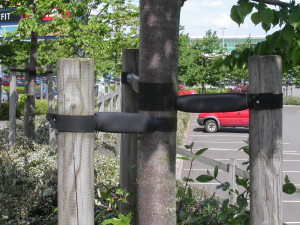How To Choose the Right Tree Staking Method

Tree Staking
When planting new trees it is essential to secure them correctly. Wind and movement can damage tree roots which can slow down establishment and even result in tree losses. Any tree staking system will need to be insitu for a few of years (18 months to 3 years), to ensure the newly planted trees have anchored themselves firmly into the ground.
Apart from the obvious question of cost, selecting the best tree staking system will depend on a number of factors including:
1. Location – Windswept or sheltered?, “Prestige” site?, Subject to vandalism?
2. Bare Root or container grown trees
3. Tree size at planting
4. Maintenance after planting
5. Reputation – will cutting corners be justified long term?
Specifiers and users generally know exactly what they want but specifications can vary enormously, hence the large number of items available in the market. Hopefully the below staking tree methods will shed some light on what can be an unnecessarily complicated subject.
Staking Tree Methods
There are a variety of different staking tree methods that can be used. There are two key factors to consider first:
1. Size/type of tree
2. Location
The choice is normally a simple one. The larger the tree, or the more exposed a site, the more support the tree will need.
Single Stake and Tie

This system is best suited for feathered up to standard trees. For feathered trees it is best to use a Square Tree Stake with a buckle tree tie and spacer. Using a buckle tree tie makes it easy to adjust the tie as the tree grows. Ensure you have about an inch gap between the tree and the stake, and if possible insert the stake on the side of the prevailing wind so that the tree is blown away from the stake. Our range of Tree Ties are ideal for the Single Stake and Tie Method, they have a genuine anti-slip nature and come complete with a pliable spacer and robust buckle for ease of adjustment.
For standard trees (2-3m/8-10cm) a more substantial single stake method will be required, this involves using a Machine Rounded Tree Stake, 25mm/35mm tree block, 24mm/35mm belting and clout nails. Our Double Rounded Tree Blocks are well suited to this method as it can be used for both square or machine rounded stakes.
Double Stake and Cross Bar
The double stake and Cross Bar method is most commonly used for container grown/rootballed trees. This system employs a wooden cross bar supported by two Machine Rounded Tree Stakes each positioned either side of the rootball. A rubber block is then attached to the cross bar acting as a cushion between the tree and bar. The tree is then secured in place by nailing/securing the belt over the tree trunk and against/onto the cross bar.
If you choose to use the slot in the block, the belting will be threaded through the block and secured onto the front of the cross bar and if you choose the cross over method with the Belting being secured at the rear of the cross bar. When using this system you will need to regularly remove and re-nail the belting to ensure the tree is not restricted/strangled so it can grow effectively. For this reason it is best to use a longer length of belting to make adjustment easier and less wasteful.
Multiple Stake Method

This is another popular system for container/rootball grown trees. The Multiple Stake system uses two or three machine rounded tree stakes. The stakes are positioned outside the rootball an equal distance from the tree trunk (usually approx. 30cm). The tree is then secured to the stakes using a length of belting, this is threaded through a Spacer Sleeve and around the trunk and back through the spacer sleeve, this is then finished by securing the belting to the stake with nails.
There is, of course, a wide choice of belting, blocks and tree ties available to the specifier or user and sometimes the ‘prestige’ factor has a part to play. We offer an extensive range of Rubberloc® tree ties and supports all of which are made from the best quality E.P.D.M polymer and fillers, we pride ourselves on supplying a product that will last in all weather conditions and temperatures.
